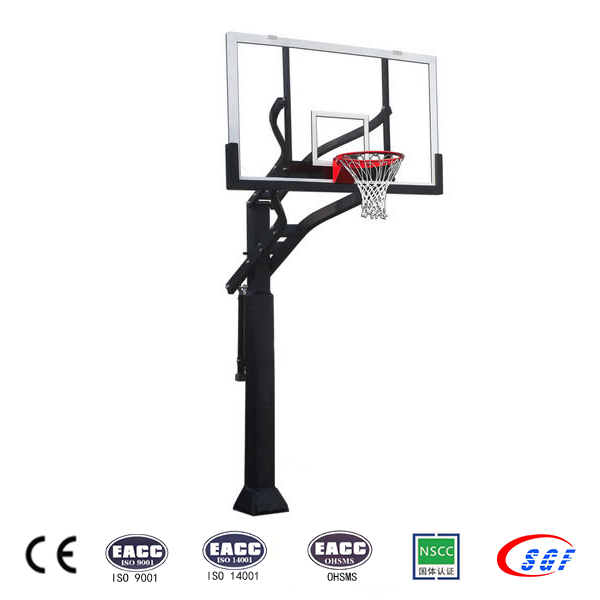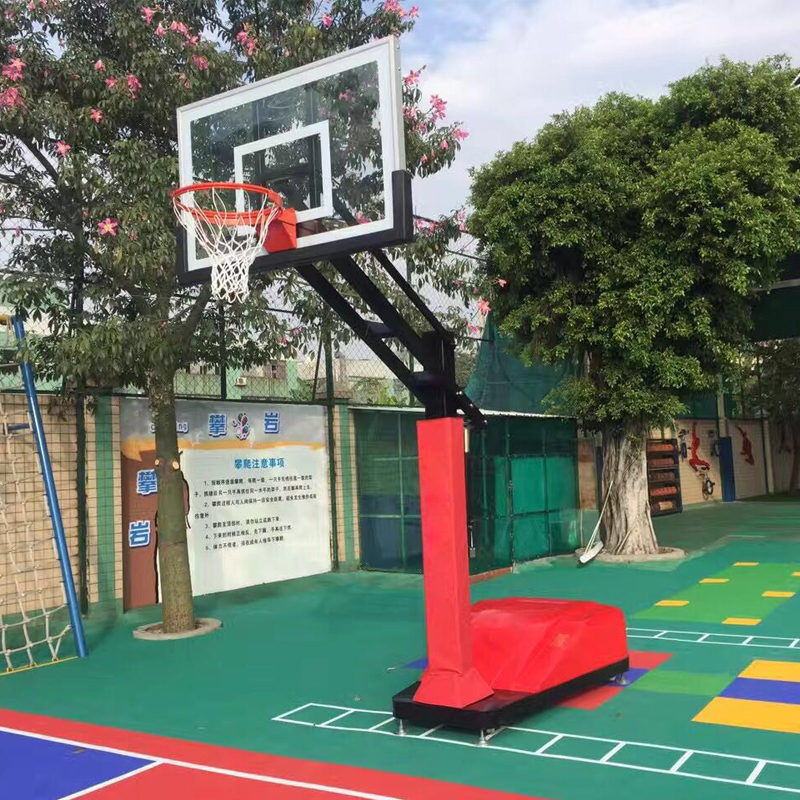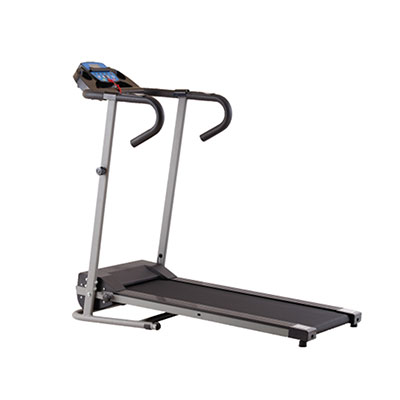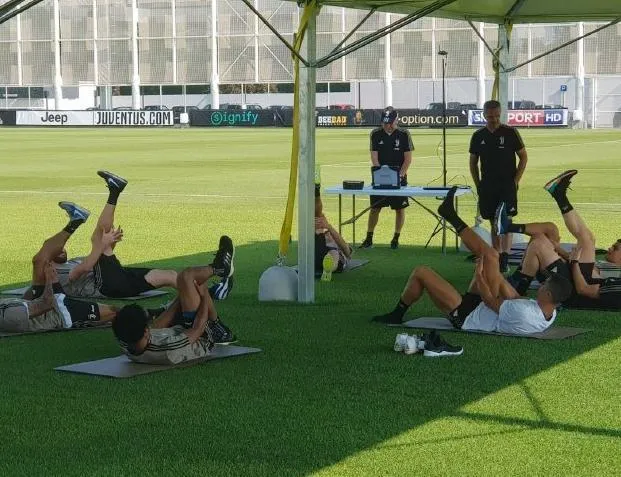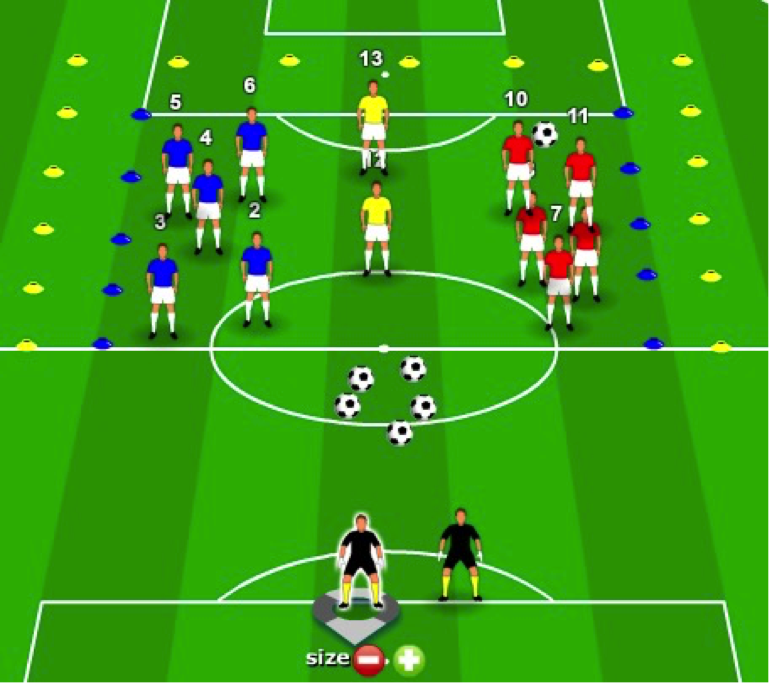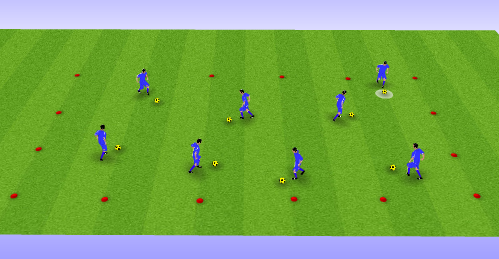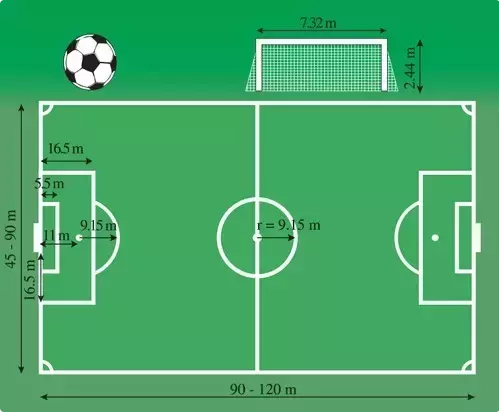Product
What is the size of a standard football goal post
Basic Info
The distance between the two posts is 7.32 meters (8 yards), and the distance from the lower edge of the beam to the ground is 2.44 meters (8 feet). The two goalposts and crossbar shall have the same width and thickness not exceeding 12 cm. The goal line is the same width as the goal posts and crossbar. The goal net can be tied to the ground behind the Goal and should be properly propped up so as not to interfere with the goalkeeper's range of motion.
Ancient football originated in China, and modern football originated in the United Kingdom. It is considered the number one sport in the world and the most influential single sport in the global sports world. As a carrier for running football, football fields have also attracted a lot of attention. So what are the differences in stadium construction for five-a-side, seven-a-side, and eleven-a-side?
Futsal pitch
1. Stadium size
The playing field must be rectangular and the length of the side lines must be longer than the length of the Goal line.Length: longest 42 meters, shortest 25 meters
Width: maximum 25 meters, minimum 15 meters
Under the principles of the above provisions, the competition venue can be adapted to local conditions.
2. Venue
The court surface must be flat and of appropriate hardness, in order not to harm the players and not affect the normal elasticity of the ball and the players.Generally, it is flattened with sand and mud mixed with soil, and the surface is covered with fine sand with a thickness of at least one centimeter. The principle is to sprinkle water on the field before the game to keep the surface moist.

3. Boundary
The playing field should be delineated with a uniform width of 8 centimeters. The boundary lines are divided into side lines, goal lines, center lines, center circle lines, penalty area lines, and substitution area lines.The two short lines connecting the goal lines are called goal lines, the two longer lines connecting the goal lines are called side lines, and the line across the middle of the court connecting the two side lines is called the center line. Draw an obvious mark at the midpoint of the center line and use it as the center of the circle. Draw a circle with a radius of 3 meters called the middle circle.
4. Penalty area
Pick a midpoint on the Goal line beside the two goal posts, take the midpoint as the center of the circle, and draw an arc with a radius of 6 meters into the field to connect with the goal lines on both sides of the goal posts. This arc is connected to the ball. The area formed by the six lines is called the penalty area (if the width of the court is more than 25 meters, use 7 meters as the radius, and if the width is 15-20 meters, use 5 meters as the radius).5. Penalty kick point
Take a midpoint on the goal line between the two goal posts, draw a vertical line toward the arc of the penalty area and mark the point where the arc intersects, which is called the penalty point.6. Replacement area
On the sideline where substitute players are set up on the court, draw a line 80cm long on each side 3 meters perpendicular to the sideline, based on the center line, with 40cm drawn inside the court and 40cm drawn outside the court. This is the regulation for player substitution. Entry and exit area.7. Goal
The goal is set in the center of the two goal lines. It is composed of two upright door pillars 3 meters apart on the inside and a horizontal beam 2 meters below the ground. The width of the doorposts and beams are both 8 cm.There is a net hanging behind the goal, and there should be a certain amount of space between the net, the goalposts, and the crossbar, so as not to affect the goalkeeper's activities and to facilitate observation of the ball entering the goal. The goal can be fixed or moved.
8. Lighting
For evening games, the golf course will set up 3-4 light poles 1.5 meters away from the sideline, with each pole being more than 6 meters high.9. Blocking
Poles will be set up around the court along the six ball lines and 1.5 meters away from the sideline, with a height of more than 6 meters.10. Seats
If there are seats (or fixed seats) on the sidelines of the stadium, they must be 1.5 meters away from the sidelines.
Sevens football pitch
1. Venue
Length: longest 74 meters, shortest 54 metersWidth: longest 52 meters, shortest 37 meters
Under the principles of the above provisions, the competition venue can be adapted to local conditions.
2. Field markings
10cm wide, made of white environmentally friendly paint.

3. Artificial grass specifications
There are two adjacent pieces of dark green and fruit green grass, each with a width of 4 meters.4. Goal
The length of the goal is 5 meters and the height is 2 meters. The goal length of the irregular seven-a-side football field can be as short as 4 meters.5. Restricted areas
Small restricted area: 13 meters in length and 4 meters in width;Large restricted area: 25 meters in length and 10 meters in width.
6. Penalty kick spot
A 9-meter long line segment is drawn from the center of the goal to the field, and this point is the penalty kick point.7. Free throw arc
With the penalty point as the center and 6 meters as the radius, make an arc. The outer arc of the intersection with the penalty area is the penalty arc.8. Middle Circle District
Draw a circle with the center of the court as the midpoint (kick-off point) and a radius of 6 meters.9. Corner area
With the four corners of the seven-a-side football field as the center and a radius of 6 meters, draw a circle on each side. The quarter arc that intersects with the sideline is the corner kick area of the seven-a-side football field.

11-a-side football pitch
11-a-side football stadiums not used for international competitions:
Length: 90 meters (100 yards) - 120 meters (130 yards)Width: 45 meters (50 yards) to -90 meters (100 yards)
11-a-side football stadium used for international competitions:
Length: 100 meters (110 yards) to 110 meters (120 yards)
Width: 64 meters (70 yards) to 75 meters (80 yards)
Goal: 7.32 meters (8 yards) wide, 2.44 meters (8 feet) high.
The width and depth of the eyebrows, pillars and goal line must not exceed the international 12 cm (5 inches), and the eyebrows and pillars must be white. (Must be in the middle of the bottom line (width)).
The standard 11-a-side football pitch specified by FIFA:
Venue: 105 meters long and 68 meters wideGoal: 7.32 meters long, 2.44 meters high
Large penalty area (penalty area): 40.32 meters long, 16.5 meters wide, 16.5 meters away from the goal post on the baseline
Small penalty area (goal area): 18.32 meters long, 5.5 meters wide, 5.5 meters away from the goal post at the bottom line
Middle circle area: radius 9.15 meters
Corner kick area: 1 meter radius, 13.84 meters from the penalty area
Penalty kick arc: a semicircle with the penalty point as the center and a radius of 9.15 meters.
Penalty kick spot: 11 meters from the goal line
Previous what is cage football



